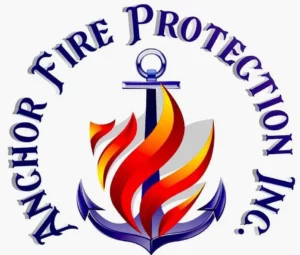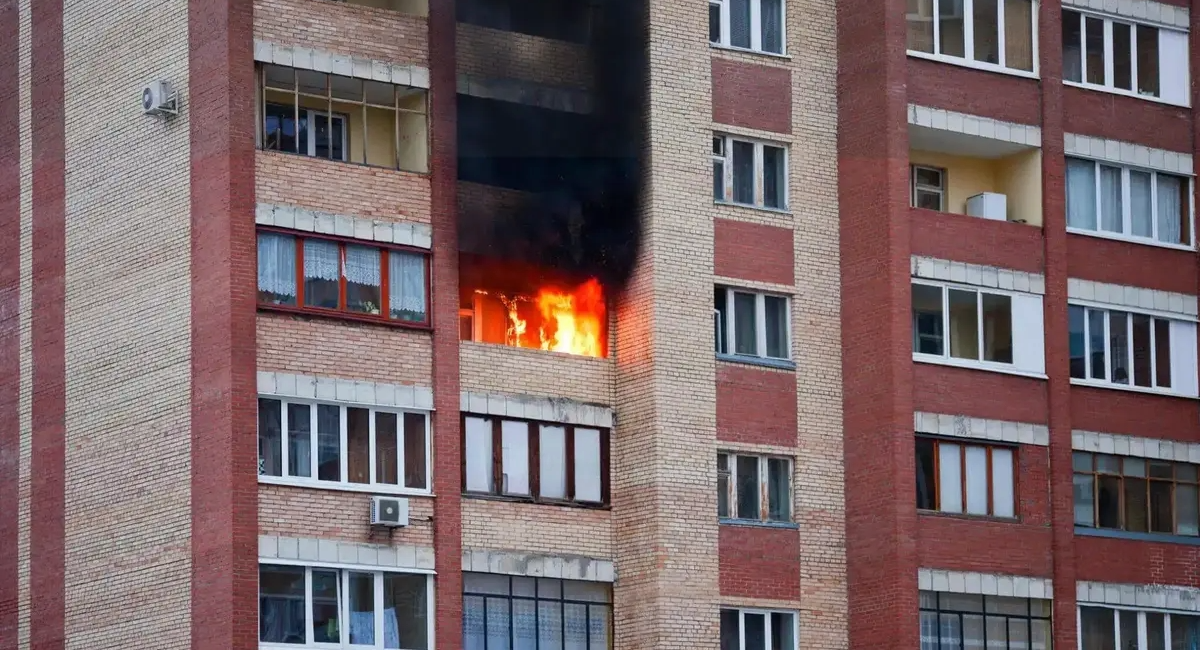What is fire compartmentation and how to prevent it?
When it comes to protecting people and property during emergencies, the phrases “fire compartmentation” and smoke compartmentation” are fundamental, much like the services offered by Anchorfire. A planned and systematic approach to containing a fire and preventing its spread throughout a building, fire compartmentation is essential in modern building design
The idea is to partition a building into compartments that serve as barriers to keep a fire contained in a certain area for a specific period of time. Structures and materials resistant to fire are deliberately included, such as walls and fire barriers. In addition to helping to save lives, fire compartmentation reduces property damage by facilitating an organized emergency response.
This article will discuss the importance of building compartmentation while investigating different factors, including smoke compartment doors, fire barriers, and more.
Standard Procedures
Construct a fire compartmentation system that satisfies the requirements specified by industry standards, building codes, and laws.
- Create barriers using fire-resistant ceiling materials like concrete, gypsum board, or other authorized fire-retardant materials to stop a fire from spreading vertically across different floors of a building.
- Cover any wall and ceiling penetrations, openings, pipes and ducts with fire-resistant materials to stop a fire from spreading. Assign fire-resistant ratings for them to improve ceilings’ resistance to fire damage.
- Give a clear definition of fire barriers in the layout of the building, including the locations and materials that were used to create the zones that are resistant to fire.
- Install doors with a fire rating on the walls. Make sure fire doors have self-closing mechanisms installed so that they will shut on their own in the case of a fire.
- Implement policies in place to regulate the flow of smoke in enclosed areas. Make use of smoke compartment doors that have been thoroughly tested and proven to stop smoke from entering.
- Install HVAC fire dampers to isolate various areas and stop fire from spreading through air distribution networks. Keep fire dampers maintained and inspected on a regular basis to guarantee optimal performance. Maintain the fire resistance of the compartmentation elements by using certified firestopping techniques.
- Build fire compartmentation to enable building residents to evacuate safely and effectively in an emergency. Provide escape routes that are unaffected by the compartmentation procedures, as well as obvious direction markers. Make sure that every component of fire compartmentation is inspected and maintained on a regular basis.
- Follow regional construction rules, fire safety laws, and other criteria that are relevant to the particular area. Ensure that the fire compartmentation plan satisfies or goes beyond regulatory criteria by closely collaborating with pertinent authorities.
Where is it necessary to have fire compartmentation?
Systems for compartmentalizing fires are cleverly combined to stop the spread of smoke and fire. HVAC (Heating, Ventilation, and Air Conditioning) systems and walls and ceilings are two important locations where fire compartmentation systems are frequently used in many kinds of buildings and structures.
Commercial Buildings
These include office buildings, retail centers, and other commercial buildings.
Industrial Establishments
Factories, storage facilities, and other industrial locations where combustible materials and equipment are frequently used.
Household Structures
Residential buildings, such as apartment complexes, condominiums, and single-family houses.
Medical Facilities
It is necessary to create a fire compartment to safeguard patients, medical personnel, and vital equipment in healthcare buildings, including hospitals and clinics.
Educational Institutions
It is required of schools, colleges, and universities to put in place fire compartmentation systems in order to protect professors and students.
Transportation Hubs
Bus terminals, train stations, and airports must have strong fire safety precautions.
Historical Sites
Special fire safety regulations are frequently applied to buildings that hold historical or cultural significance.
Entertainment Venues
Fire compartmentation systems are necessary in stadiums, theaters, and concert halls to guarantee the security of big crowds during events.
Governmental Establishments
Offices and administrative centers are required to have fire safety procedures to safeguard personnel and confidential data.
What procedures should be followed if a building does not have proper fire compartmentation?
A building with insufficient fire compartmentation poses a significant risk to public safety. While a proper compartmental upgrade is strongly advised, there are a number of other measures that can be taken in the meantime to increase fire safety and possibly save valuable time in an emergency.
- Improve the barriers that already exist. Make sure that all fire doors latch and close automatically. Replace weatherstripping and damaged seals. Think about installing self-closing spring hinges. Look for gaps or cracks around cables, pipes, and ventilation ducts. Seal these penetrations with mortar or caulk that is fire resistant.
- Use fire curtains and fire blankets to create temporary barriers and subdivide large spaces into smaller compartments. These portable, heat-resistant blankets can be used to shield escape routes or cover small fires in their early stages.
- Assign fire wardens to strengthen evacuation protocols and carry out frequent fire exercises. Inform inhabitants about evacuation routes and alternative exits. Ensure that signage is clear and easy to read, especially in smoky situations. Train people to help in evacuations and make sure everyone is safe.
- Install smoke detectors, alarms, portable fire extinguishers, and update sprinkler systems. Early notice is critical for a timely and effective response. If possible, build or enhance sprinkler systems for automatic fire suppression.
Remember, these methods are interim steps to potentially reduce dangers while focusing on a long-term solution. Consult with a trained fire safety professional to assess the specific needs of your building and implement the most effective solutions.
Responsible Authorities for Fire Compartmentation
It is necessary to assign accountability to “responsible authorities,” who will ensure that qualified persons conduct fire safety surveys on a regular basis.
Building Owners and Managers
They are responsible for ensuring that the building meets applicable codes and standards.
Facility Management Teams
Facility management teams are in charge of overseeing fire compartmentation procedures on a daily basis, including inspections, maintenance, and dealing with any difficulties that arise.
Fire Safety Officers
Hire fire safety officers who specialize in analyzing and managing fire safety systems like compartmentation. They play an important role in enforcing and monitoring safety measures.
Contractors and Engineers
Architects, engineers, and contractors who design, build, or modify buildings must have appropriate fire compartmentation systems.
Occupants and Users
They should follow safety rules, avoid blocking fire doors, and immediately report any concerns related to compartmentalization features.
A collaborative and proactive strategy is essential for maintaining a safe built environment and reducing the possible effects of fire accidents.
How to Manage Risks?
- Engage fire safety professionals, architects, and engineers to evaluate the efficacy of current compartmentation procedures. Conduct routine inspections of fire barriers, walls, ceilings, and other compartmentation elements to detect signs of wear, damage, or degradation.
- Fire doors, smoke compartment doors, and other fire-resistant parts should be tested and certified on a regular basis by certified personnel to ensure compliance with safety regulations.
- Integrate fire compartmentation principles into the overall emergency response plan of a building. Provide fire compartmentation training to all building staff, including security and maintenance personnel.
- Raise awareness regarding the appropriate usage of fire doors, the need to keep doors closed, and the need to keep sealed penetrations. Conduct regular exercises to ensure that residents and personnel are familiar with evacuation procedures.
- Keep detailed records of all fire compartmentation features, including installation dates, materials utilized, and inspection and maintenance histories. Maintain easily available paperwork for regulatory compliance and decision-making during inspections.
Summary
In conclusion, fire compartmentation and smoke compartmentation are critical components of building safety, functioning together to reduce the damage of fires and improve overall structural resilience.
Construction and design industry stakeholders may help to create safer and more secure built environments by understanding the role of fire barriers, smoke compartment doors, and building compartmentation.
As technology and building codes grow, staying up-to-date on the newest developments in fire and smoke containment is critical to ensuring that building safety standards continue to improve.
KEEP YOUR PROPERTY SAFE
Related posts
-
Fire Safety Tips for the Workplace
-
Fire Safety Tips for Hospitals
-
How to size fire pumps?
-
Different types of sprinklers?
-
What is fire protection system?
-
Fire Extinguisher Inspection
-
Fire Sprinkler System Components
-
What are the most common types of fire pumps?
-
How much does a fire sprinkler system cost?
-
What is active and passive fire protection?

